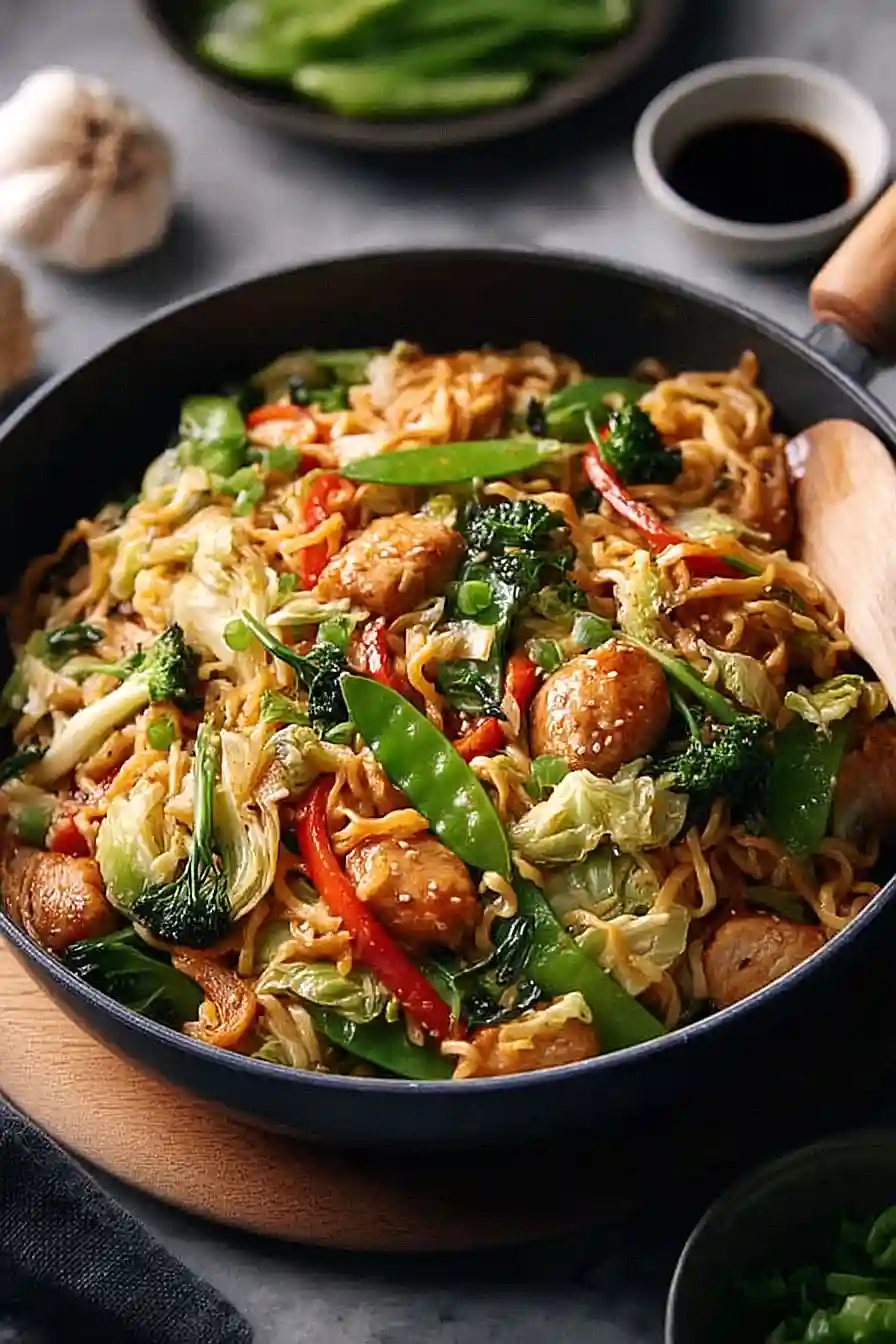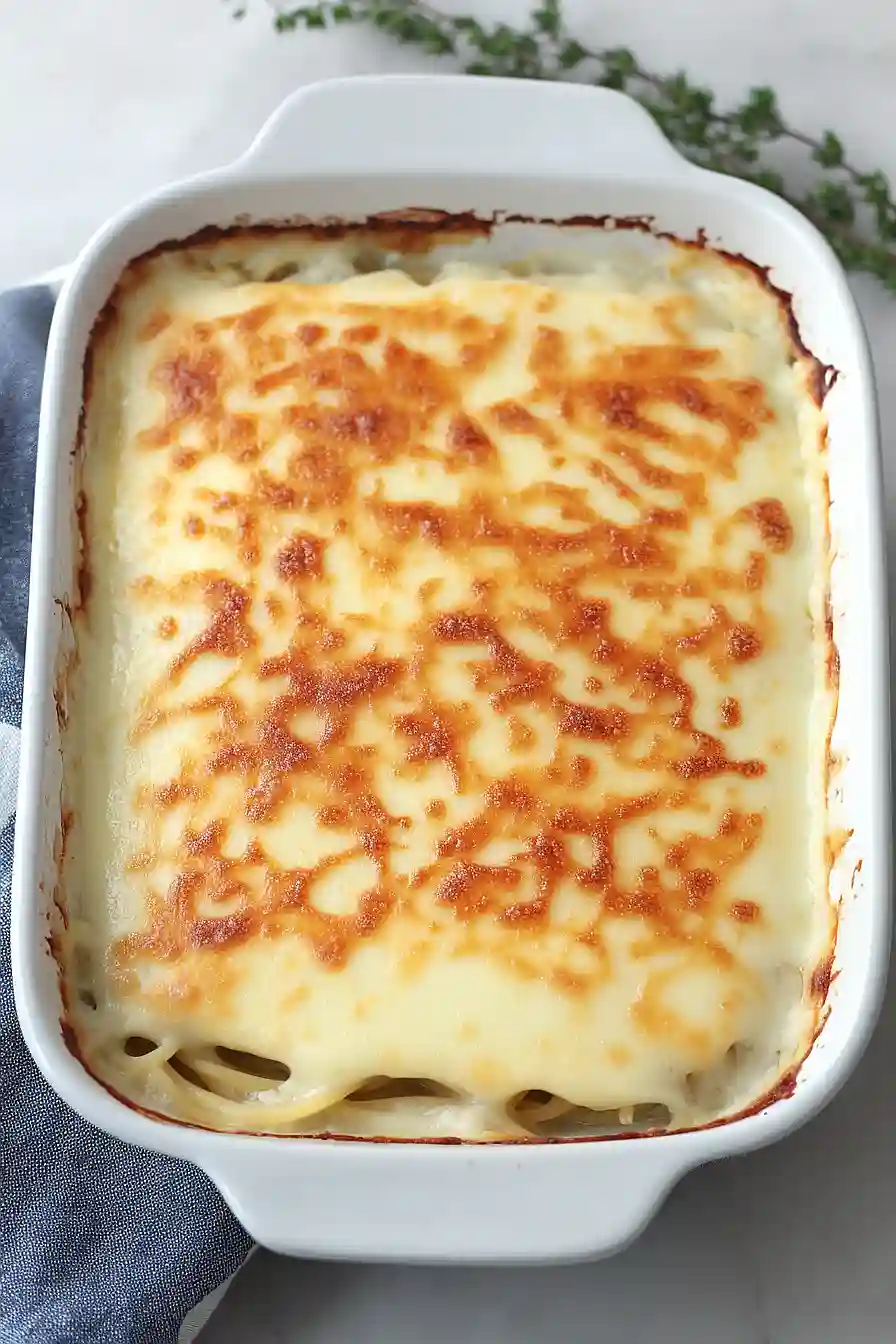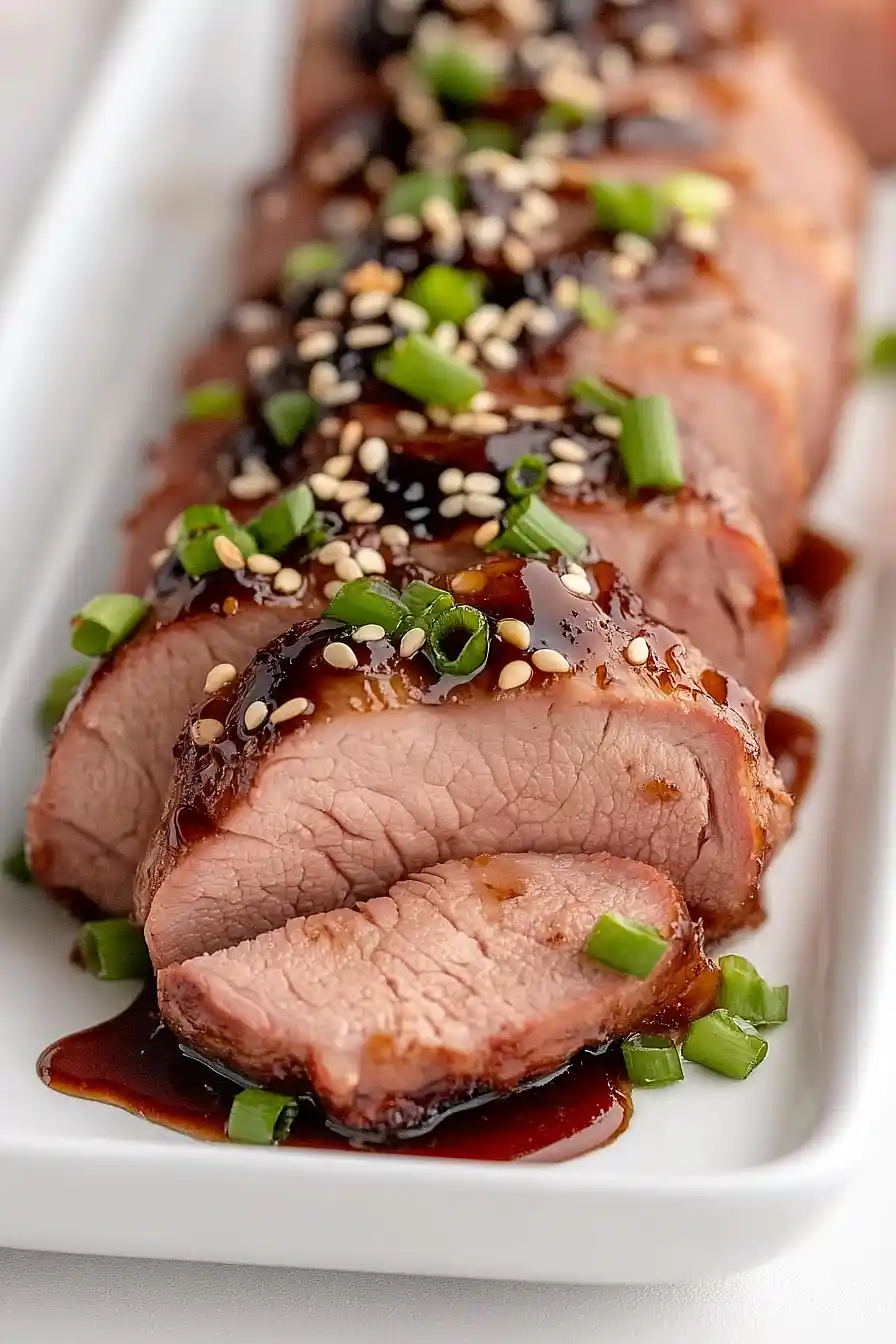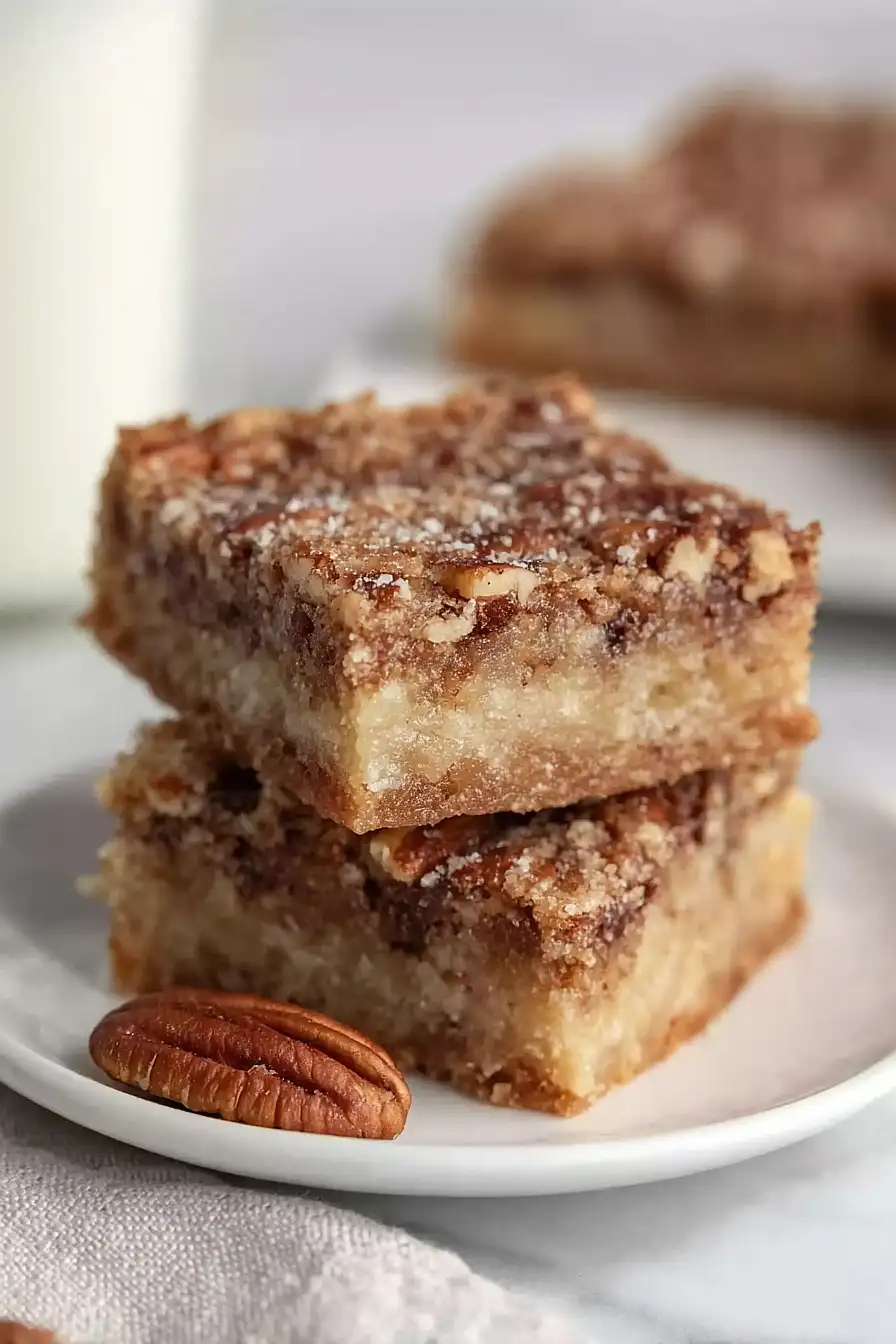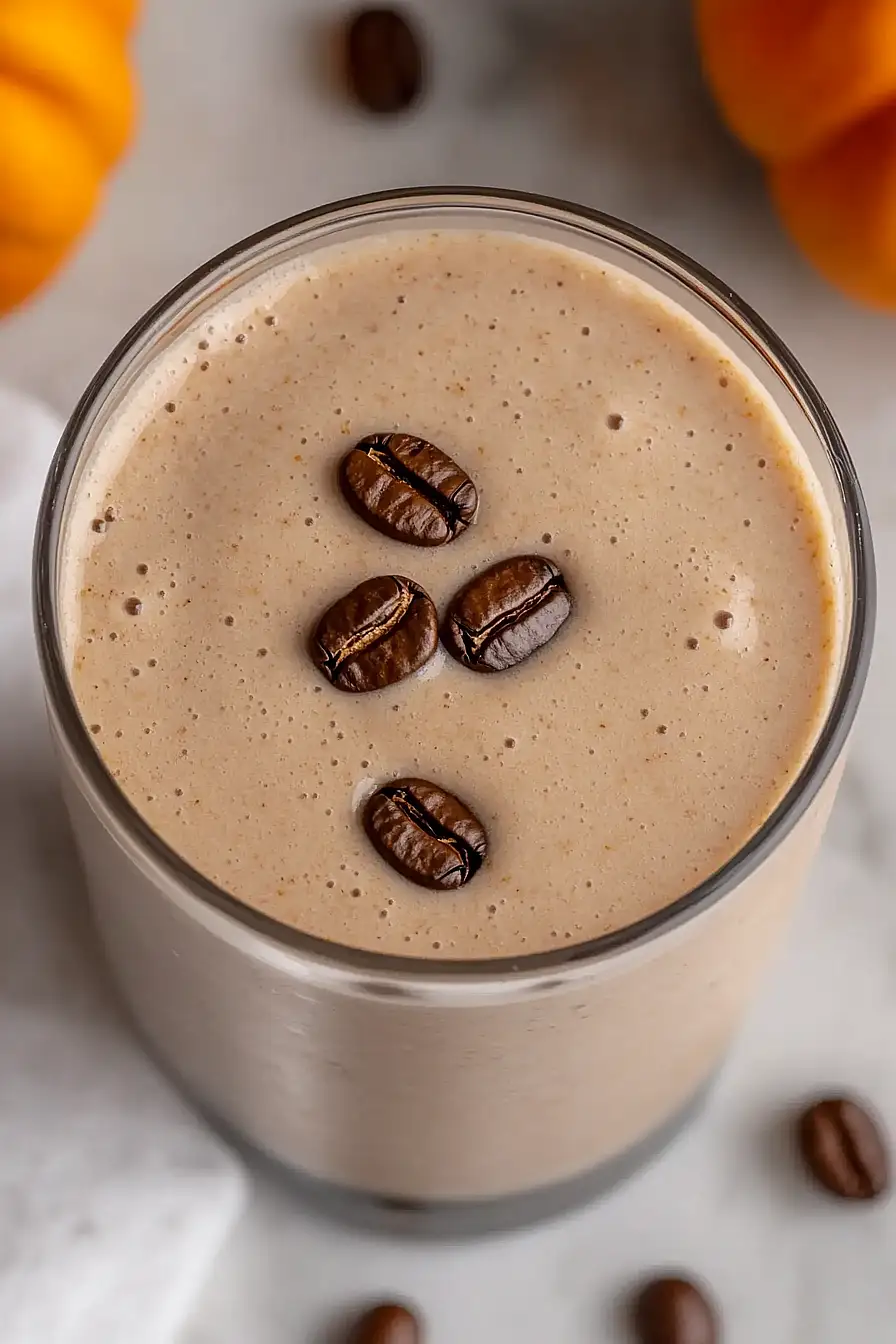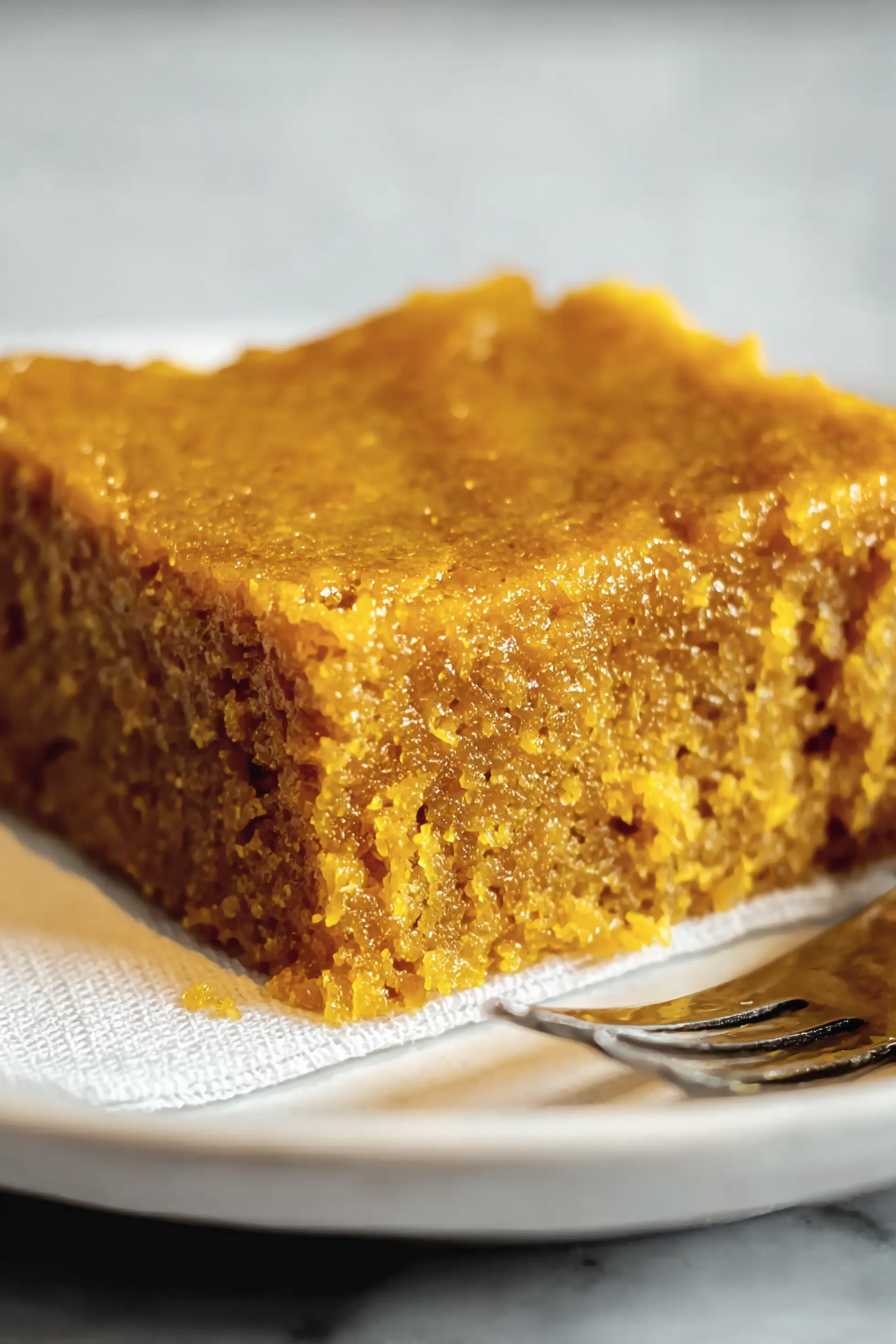When I’m craving takeout but want to eat healthier, I turn to homemade lo mein. There’s something about those soft noodles and savory sauce that hits the spot every time. But ordering from our local Chinese restaurant usually means I’m hungry again in an hour and my wallet is lighter.
That’s why I started making cabbage lo mein at home. It gives me all the comfort of restaurant lo mein but with way more vegetables. The cabbage adds great crunch and makes the whole dish more filling. Plus, I can control exactly what goes into that sauce.
The best part? It comes together in about 20 minutes. I can have dinner on the table faster than delivery would arrive. My kids actually ask for seconds, which never happens when I try to sneak vegetables into their meals. Sometimes the simplest swaps make the biggest difference.
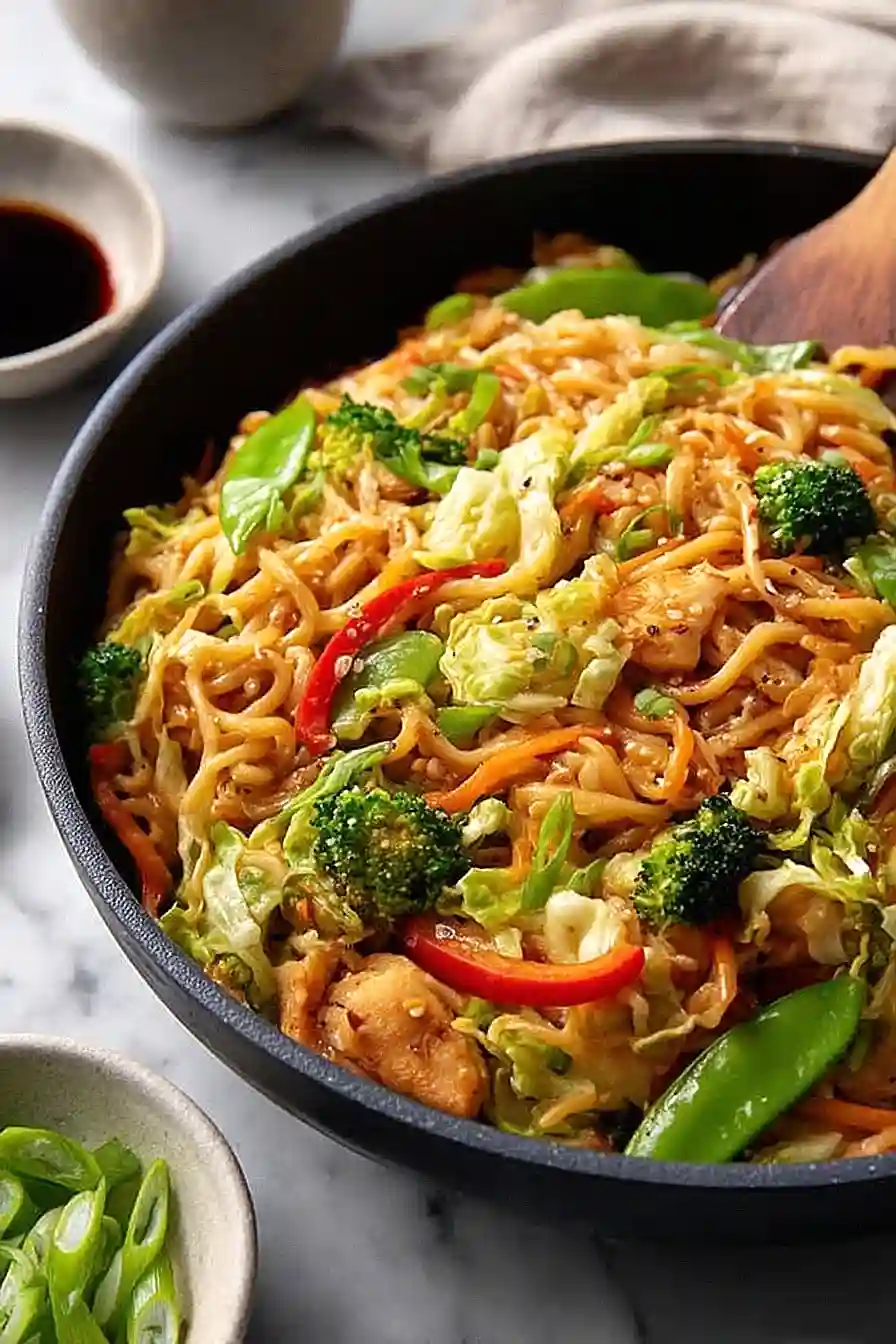
Why You’ll Love This Cabbage Lo Mein
- Quick weeknight dinner – Ready in just 30-40 minutes, this stir-fry comes together faster than ordering takeout and tastes so much better.
- Packed with fresh vegetables – With broccoli, bell peppers, snow peas, and cabbage, you’re getting a rainbow of nutrients in every bite without feeling like you’re eating a salad.
- Better than takeout – You control the sodium and ingredients, making it a healthier version of your favorite Chinese restaurant dish right in your own kitchen.
- One-pan meal – Everything cooks in one large skillet or wok, which means less cleanup and more time to enjoy your delicious dinner.
- Customizable protein – While this recipe uses chicken, you can easily swap in shrimp, beef, or tofu to match your preferences or what you have on hand.
What Kind of Cabbage Should I Use?
For this lo mein recipe, napa cabbage is your best bet and it’s what I always reach for when making Asian-inspired dishes. This type of cabbage has a milder, sweeter flavor compared to regular green cabbage, and its leaves are more tender, which means they cook quickly and won’t overpower the other ingredients. You can find napa cabbage in most grocery stores – it’s the oblong-shaped cabbage with pale green leaves and white stems. If you can’t find napa cabbage, regular green cabbage will work in a pinch, but you’ll want to slice it extra thin and maybe cook it a minute or two longer to get it tender.
Options for Substitutions
This lo mein recipe is pretty forgiving when it comes to swaps – here are some easy substitutions you can make:
- Lo mein noodles: Can’t find lo mein noodles? Fresh linguine, spaghetti, or even ramen noodles (without the seasoning packet) work great. Cook them according to package directions and they’ll soak up all those good flavors.
- Chicken breast: Feel free to use chicken thighs for more flavor, or swap in beef sirloin, pork tenderloin, or even tofu for a vegetarian version. Just adjust cooking times accordingly.
- Napa cabbage: Regular green cabbage or bok choy make good substitutes. If using regular cabbage, slice it extra thin since it takes a bit longer to cook down.
- Vegetables: This is where you can really get creative! Swap the broccoli for snap peas, use regular onions instead of scallions, or try carrots and zucchini. Just keep the cooking times in mind – harder veggies go in first.
- Chile-garlic sauce: If you don’t have this on hand, mix 1 teaspoon sriracha with 1 minced garlic clove, or use a pinch more crushed red pepper.
- Fresh ginger: Ground ginger works in a pinch – use about 1 teaspoon instead of the 2 tablespoons fresh, and add it with the other seasonings.
Watch Out for These Mistakes While Cooking
The biggest mistake when making cabbage lo mein is overcooking the vegetables, which turns them mushy and kills that satisfying crunch – add harder vegetables like broccoli first, then softer ones like cabbage and snow peas at the end for just 1-2 minutes.
Another common error is not cooking the noodles properly: undercook them by about a minute since they’ll finish cooking in the wok with the sauce, and always rinse them with cold water to prevent sticking.
Don’t crowd your pan when stir-frying the chicken and vegetables – work in batches if needed so everything gets properly seared instead of steamed, and make sure your wok or large skillet is smoking hot before adding ingredients.
Finally, mix your cornstarch with the chicken broth ahead of time to avoid lumps, and have all your ingredients prepped and ready to go since this dish cooks fast once you start.
What to Serve With Cabbage Lo Mein?
This cabbage lo mein is pretty much a complete meal on its own since it’s packed with chicken, vegetables, and noodles, but there are some great sides that pair nicely with it. I love serving it with crispy egg rolls or pot stickers for extra texture and that authentic takeout feel. A simple cucumber salad with rice vinegar dressing helps cut through the richness of the noodles and adds a refreshing crunch. If you want something warm, try some steamed dumplings or a small bowl of wonton soup as a starter.
Storage Instructions
Refrigerate: Cabbage lo mein keeps really well in the fridge for up to 4 days in an airtight container. The noodles might absorb some of the sauce as it sits, but that just makes them more flavorful! I actually think it tastes even better the next day when all those Asian flavors have had time to meld together.
Freeze: You can freeze this lo mein for up to 2 months, though the texture of the vegetables will be a bit softer when thawed. Let it cool completely first, then store in freezer-safe containers or bags. It’s great for those busy weeknight dinners when you need something quick and satisfying.
Warm Up: To reheat, toss it in a large skillet or wok over medium heat with a splash of chicken broth or water to loosen things up. You can also microwave it in 30-second intervals, stirring between each one. The key is to heat it gently so the noodles don’t get mushy.
| Preparation Time | 15-20 minutes |
| Cooking Time | 15-20 minutes |
| Total Time | 30-40 minutes |
| Level of Difficulty | Medium |
Estimated Nutrition
Estimated nutrition for the whole recipe (without optional ingredients):
- Calories: 1200-1400
- Protein: 70-80 g
- Fat: 60-70 g
- Carbohydrates: 120-140 g
Ingredients
For the marinade and sauce:
- 2 tbsp sesame oil
- 3 tbsp reduced-sodium soy sauce
- 1/4 tsp crushed red pepper
- 3/4 cup unsalted chicken broth
- 1 tsp cornstarch
- 1 tsp chile-garlic sauce
For the noodles:
- 8 oz lo mein noodles
- 2 tsp sesame oil
For the protein:
- 12 oz boneless, skinless chicken breast, sliced 1/4-inch thick
For the vegetables:
- 3 tbsp vegetable oil, divided
- 5 oz cremini or button mushrooms, thinly sliced
- 4 garlic cloves, minced
- 2 tbsp fresh ginger, chopped
- 1 bunch scallions, sliced thin
- 2 cups bite-sized broccoli florets (from 1 large crown)
- 1 red bell pepper, cut into strips
- 1 cup snow peas, halved
- 4 1/2 cups finely sliced napa cabbage (about half a head)
Step 1: Marinate the Chicken
- 2 tbsp sesame oil
- 3 tbsp reduced-sodium soy sauce
- 1/4 tsp crushed red pepper
- 12 oz boneless, skinless chicken breast, sliced 1/4-inch thick
In a large bowl, combine 2 tablespoons sesame oil, 3 tablespoons reduced-sodium soy sauce, and 1/4 teaspoon crushed red pepper.
Add the sliced chicken breast and toss to coat evenly.
Set the chicken aside to marinate while you prepare the other ingredients.
This quick marinade adds both flavor and tenderness to the chicken.
Step 2: Cook the Noodles and Season
- 8 oz lo mein noodles
- 2 tsp sesame oil
- 1 tsp chile-garlic sauce
Bring a large pot of water to a boil.
Add the lo mein noodles and cook according to package directions until just tender.
Drain the noodles, transfer them to a large bowl, and toss immediately with 2 teaspoons sesame oil and 1 teaspoon chile-garlic sauce.
Set aside.
I find this step ensures the noodles are nicely flavored and don’t stick together.
Step 3: Sauté the Mushrooms, Aromatics, and Scallions
- 3 tbsp vegetable oil, divided
- 5 oz cremini or button mushrooms, thinly sliced
- 4 garlic cloves, minced
- 2 tbsp fresh ginger, chopped
- 1 bunch scallions, sliced thin
Heat 1 tablespoon vegetable oil in a large skillet or wok over medium-high heat until shimmering.
Add the sliced mushrooms and cook until their juices are released and the mushrooms turn golden and tender, about 4 to 5 minutes.
Stir in the minced garlic, chopped ginger, and sliced scallions and cook for 1 minute more until fragrant.
Transfer this mushroom mixture to a medium bowl.
Step 4: Cook the Vegetables
- 3 tbsp vegetable oil, divided
- 2 cups bite-sized broccoli florets
- 1 red bell pepper, cut into strips
- 1 cup snow peas, halved
- 4 1/2 cups finely sliced napa cabbage
Add 1 tablespoon vegetable oil to the pan and heat over medium-high heat until shimmering.
Add broccoli florets, red bell pepper strips, and halved snow peas.
Cook, stirring often, until the vegetables are tender-crisp, about 2 to 3 minutes.
Stir in the napa cabbage and cook until just wilted, about 2 minutes more.
Transfer all the cooked vegetables to the bowl with the mushroom mixture.
For extra color and nutrition, I always include the full variety of vegetables listed.
Step 5: Cook the Chicken and Make the Sauce
- 3 tbsp vegetable oil, divided
- marinated chicken from Step 1
- 3/4 cup unsalted chicken broth
- 1 tsp cornstarch
Heat the remaining 1 tablespoon vegetable oil in the pan over medium-high heat.
Remove the chicken from the marinade (reserving the marinade in the bowl) and add the chicken to the pan.
Sauté until cooked through, about 2 to 3 minutes.
Meanwhile, add the chicken broth and cornstarch to the reserved marinade and whisk until smooth.
Pour this sauce into the pan with the chicken and simmer until the sauce thickens, 1 to 2 minutes.
Step 6: Combine Everything and Serve
- cooked vegetable and mushroom mixture from Steps 3 and 4
- chicken and sauce from Step 5
- seasoned noodles from Step 2
Add the cooked vegetable and mushroom mixture (from Steps 3 and 4) to the pan with the chicken and toss to combine thoroughly.
Transfer the chicken and vegetables mixture to the bowl with the seasoned noodles (from Step 2) and toss until everything is evenly coated and distributed.
For a punch of freshness, I like to sprinkle a few extra sliced scallions on top before serving.
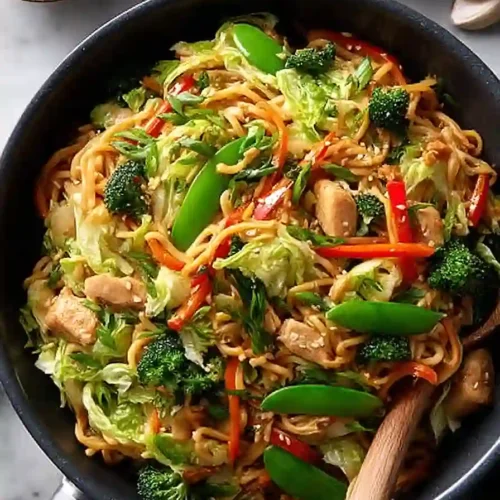
Perfect Cabbage Lo Mein
Ingredients
For the marinade and sauce:
- 2 tbsp sesame oil
- 3 tbsp reduced-sodium soy sauce
- 1/4 tsp crushed red pepper
- 3/4 cup unsalted chicken broth
- 1 tsp cornstarch
- 1 tsp chile-garlic sauce
For the noodles:
- 8 oz lo mein noodles
- 2 tsp sesame oil
For the protein:
- 12 oz boneless, skinless chicken breast, sliced 1/4-inch thick
For the vegetables:
- 3 tbsp vegetable oil, divided
- 5 oz cremini or button mushrooms, thinly sliced
- 4 garlic cloves, minced
- 2 tbsp fresh ginger, chopped
- 1 bunch scallions, sliced thin
- 2 cups bite-sized broccoli florets (from 1 large crown)
- 1 red bell pepper, cut into strips
- 1 cup snow peas, halved
- 4 1/2 cups finely sliced napa cabbage (about half a head)
Instructions
- In a large bowl, combine 2 tablespoons sesame oil, 3 tablespoons reduced-sodium soy sauce, and 1/4 teaspoon crushed red pepper. Add the sliced chicken breast and toss to coat evenly. Set the chicken aside to marinate while you prepare the other ingredients. This quick marinade adds both flavor and tenderness to the chicken.
- Bring a large pot of water to a boil. Add the lo mein noodles and cook according to package directions until just tender. Drain the noodles, transfer them to a large bowl, and toss immediately with 2 teaspoons sesame oil and 1 teaspoon chile-garlic sauce. Set aside. I find this step ensures the noodles are nicely flavored and don’t stick together.
- Heat 1 tablespoon vegetable oil in a large skillet or wok over medium-high heat until shimmering. Add the sliced mushrooms and cook until their juices are released and the mushrooms turn golden and tender, about 4 to 5 minutes. Stir in the minced garlic, chopped ginger, and sliced scallions and cook for 1 minute more until fragrant. Transfer this mushroom mixture to a medium bowl.
- Add 1 tablespoon vegetable oil to the pan and heat over medium-high heat until shimmering. Add broccoli florets, red bell pepper strips, and halved snow peas. Cook, stirring often, until the vegetables are tender-crisp, about 2 to 3 minutes. Stir in the napa cabbage and cook until just wilted, about 2 minutes more. Transfer all the cooked vegetables to the bowl with the mushroom mixture. For extra color and nutrition, I always include the full variety of vegetables listed.
- Heat the remaining 1 tablespoon vegetable oil in the pan over medium-high heat. Remove the chicken from the marinade (reserving the marinade in the bowl) and add the chicken to the pan. Sauté until cooked through, about 2 to 3 minutes. Meanwhile, add the chicken broth and cornstarch to the reserved marinade and whisk until smooth. Pour this sauce into the pan with the chicken and simmer until the sauce thickens, 1 to 2 minutes.
- Add the cooked vegetable and mushroom mixture (from Steps 3 and 4) to the pan with the chicken and toss to combine thoroughly. Transfer the chicken and vegetables mixture to the bowl with the seasoned noodles (from Step 2) and toss until everything is evenly coated and distributed. For a punch of freshness, I like to sprinkle a few extra sliced scallions on top before serving.
